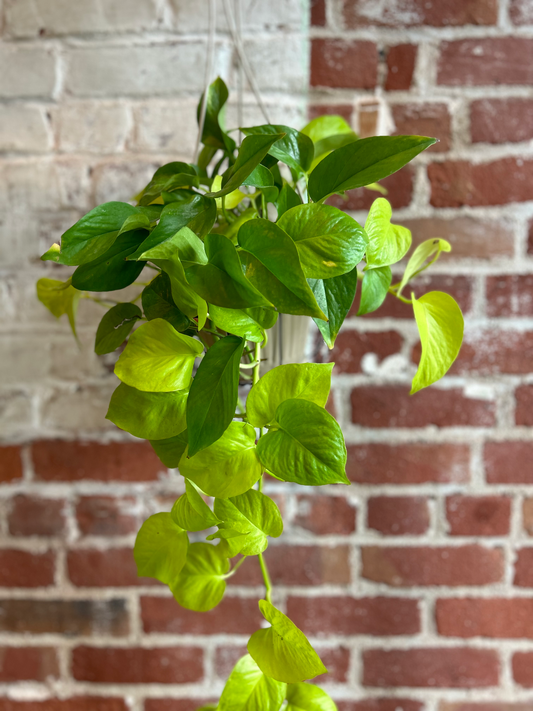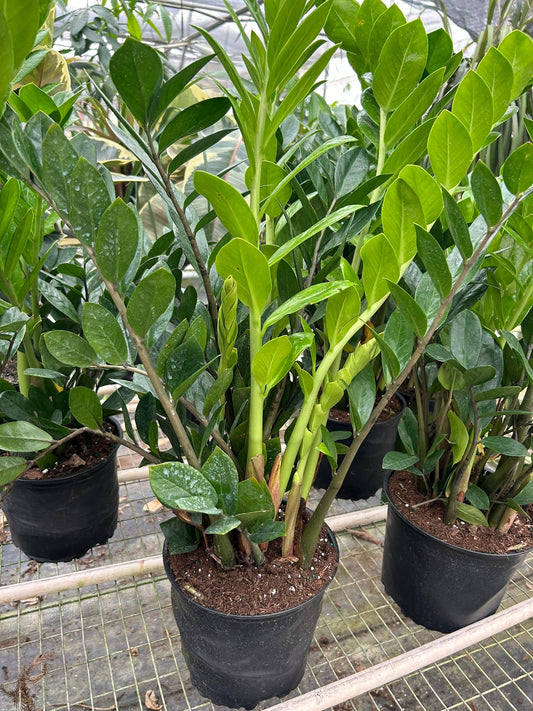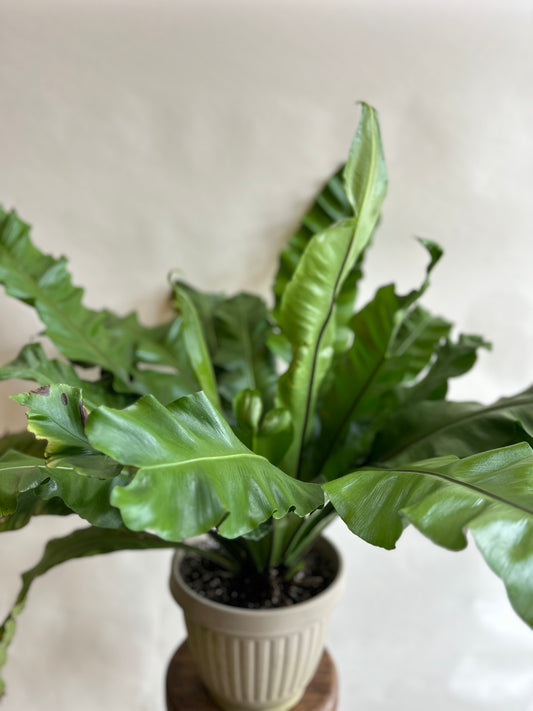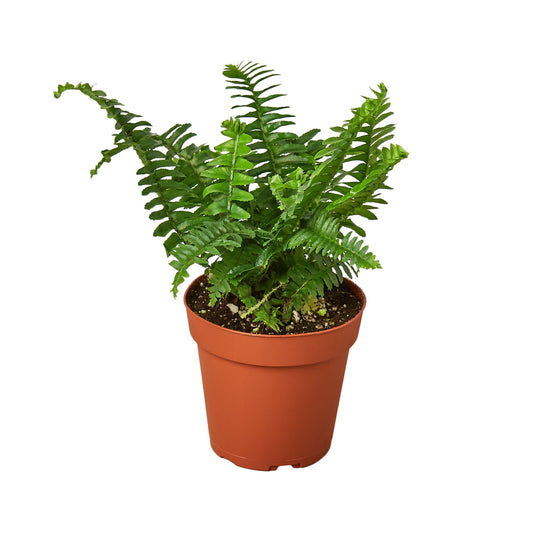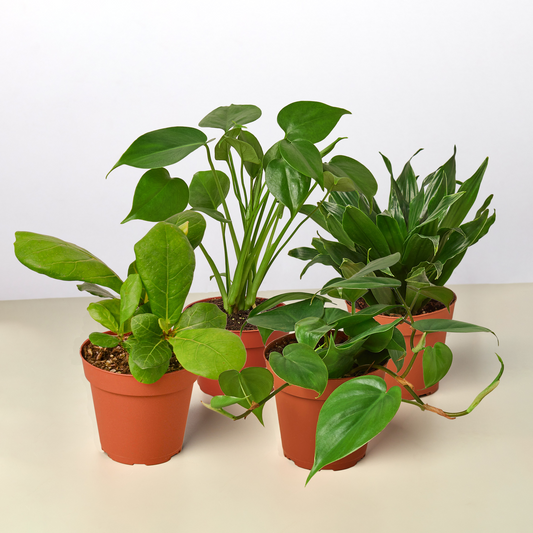How to Grow and Care for Philodendron Serpens
Cafe Planta Team
Philodendron Serpens, with its unique fuzzy stems and heart-shaped leaves, is a striking addition to any indoor plant collection. Whether you're looking to add a bit of greenery to your living room or want to challenge your plant care skills, this plant is a fantastic choice.
In this post, we'll walk through how to grow and care for Philodendron Serpens, touching on everything from potting and soil care to dealing with pests. We'll also chat about how to design your space with this plant, ensuring your home is both beautiful and vibrant.
Getting to Know Philodendron Serpens
First things first, let's get to know our plant buddy a little better. Philodendron Serpens is part of the Araceae family, known for its diverse and often dramatic foliage. This particular species is native to the rainforests of South America, where it thrives in humid and shaded environments.
The defining feature of the Serpens is its stems, which are covered in a fine fuzz, making them quite the conversation starter. Its leaves are typically a deep green, heart-shaped, and can grow quite large under the right conditions. If you're someone who loves plants that aren't just green but have a bit of character, this one's for you.
Before we get into the nitty-gritty of care, remember that every plant is unique. What works for one might not work for another, so it's all about finding what suits your specific plant and environment.
Choosing the Right Spot
Placement is crucial when it comes to keeping your Philodendron Serpens happy. These plants prefer bright, indirect light. Think of it as the dappled sunlight that peeks through the canopy of a forest. Direct sunlight can scorch their leaves, while too little light can stunt their growth.
If you're in a home with limited natural light, don't worry! These plants can adapt to lower light conditions. However, you might notice slower growth or less vibrant foliage. Consider using grow lights if needed, especially during the shorter days of winter.
Also, keep in mind the temperature. Philodendron Serpens enjoy a warm environment, ideally between 65-80°F (18-27°C). Avoid placing them in drafty areas or near heating vents, as sudden temperature changes can stress the plant.
Soil and Potting Tips
When potting your Philodendron Serpens, the soil mix is key. You want a well-draining soil that's rich in organic matter. A standard potting mix with added perlite or orchid bark works well. This ensures that the roots have enough air and water to thrive without becoming waterlogged.
- Use a pot with drainage holes to prevent water from sitting at the bottom.
- Consider a terracotta pot, which can help wick away excess moisture.
- Repot every couple of years or when you notice the roots outgrowing the pot.
When repotting, be gentle with the roots. Philodendron Serpens can be a bit sensitive to root disturbance, so take your time and handle them with care. It's a bit like giving them a home upgrade, so make sure everything's cozy and just right.
Watering: Finding the Balance
Watering can be a bit of a balancing act, but it's not as tricky as it sounds. The goal is to keep the soil consistently moist but not soggy. Allow the top inch of soil to dry out between waterings. This means you might water more frequently in the summer and less so in the winter.
Here's a quick tip: use your finger to check the soil moisture. If it feels dry an inch down, it's time for a drink. Overwatering can lead to root rot, a common issue with many houseplants, so when in doubt, it's better to underwater slightly than to drench the plant.
If you notice yellowing leaves, it might be a sign of overwatering. Adjust your schedule and see how the plant responds. Remember, plants can't speak, but they sure can tell us a lot through their leaves!
Feeding Your Plant
Philodendron Serpens aren't particularly heavy feeders, but they do appreciate a little boost during the growing season (spring and summer). A balanced, water-soluble fertilizer every month or so will do the trick. You can also opt for a slow-release fertilizer at the beginning of the growing season.
Be cautious not to over-fertilize, as this can lead to salt buildup in the soil, which isn't great for the roots. If you notice a white crust on the soil surface, it's a sign you might need to flush the soil with water to remove the excess salts.
If you're into organic gardening, liquid seaweed or fish emulsion can be great alternatives. They provide a gentle nutrient boost and can promote healthy growth without the risk of over-fertilization.
Humidity and Airflow
Being a tropical plant, Philodendron Serpens loves humidity. If your home is on the dry side, especially during winter months, consider increasing the humidity around your plant. This can be done by misting the plant regularly, placing a humidifier nearby, or grouping plants together to create a microenvironment.
Another trick is to place a tray filled with water and pebbles near the plant. As the water evaporates, it increases the humidity around the plant. Just ensure the pot isn't sitting in the water, as this can lead to root rot.
Good airflow is also essential to prevent fungal issues. You don't want too much stagnant air around your plants. A gentle fan can help keep the air moving, reducing the chances of mold or mildew developing on the leaves.
Pruning and Maintenance
Pruning is an important part of maintaining a healthy Philodendron Serpens. It not only keeps the plant looking its best but also encourages new growth. Trim any dead or yellowing leaves with clean, sharp scissors. This prevents disease and keeps the plant focused on healthy growth.
You might also want to prune back any leggy stems to encourage a fuller appearance. Don't worry, the plant will bounce back with new, bushy growth in no time. Think of it as giving your plant a haircut—necessary for keeping things tidy and thriving.
Regularly dusting the leaves with a damp cloth can help them absorb more light. Plus, clean leaves mean fewer pests, which is always a win!
Dealing with Pests and Problems
Even with the best care, pests can sometimes find their way to your Philodendron Serpens. Common culprits include spider mites, aphids, and mealybugs. If you notice these tiny invaders, act quickly to prevent them from spreading.
- Isolate the affected plant to prevent the pests from moving to other houseplants.
- Use a mixture of water and mild soap to gently wash the leaves. This can help remove pests without harming the plant.
- For more stubborn infestations, consider using neem oil or insecticidal soap.
Fungal issues, like root rot, can occur if the plant is overwatered. If you suspect root rot, check the roots. Healthy roots are firm and white, while rotten ones are mushy and brown. Trim away any affected roots and repot the plant in fresh soil.
Designing with Philodendron Serpens
Now that we've covered the basics of care, let's talk about design. Philodendron Serpens can be a stunning focal point in any room. Whether you're placing it on a plant stand, letting it trail from a hanging basket, or using it to add greenery to a bookshelf, this plant can elevate your space.
Consider pairing it with other houseplants that enjoy similar conditions, like pothos or monsteras. This not only creates a cohesive look but also helps maintain the humidity levels your Serpens loves.
If you're feeling creative, use your plant as a centerpiece for a coffee table or dining area. Its unique texture and shape make it a conversation piece, and it's sure to draw the eye.
Propagation: Sharing the Green Love
Propagation is a rewarding way to expand your plant collection or share the green love with friends. Philodendron Serpens can be propagated through stem cuttings.
To propagate, simply cut a stem with a few leaves and a node (the knobby part where leaves and roots grow). Place the cutting in water or moist soil. If you're using water, change it every few days to keep it fresh. In a few weeks, you should see roots developing.
Once the roots are a few inches long, you can transplant the cutting into soil. Keep the soil moist and provide the same care as a mature plant. Before you know it, you'll have a new plant to enjoy or gift!
Final Thoughts
Caring for Philodendron Serpens can be a fulfilling experience, from getting the light and water balance just right to watching it thrive in your space. With a bit of attention and care, this plant can grow beautifully and be a cherished part of your home.
At Cafe Planta, we’re here to help you on this plant journey. Whether you need advice or are looking to expand your collection, visit our shop or reach out to us via email or Instagram. We believe plants connect us with nature and each other, and we’re excited to share this passion with you.


